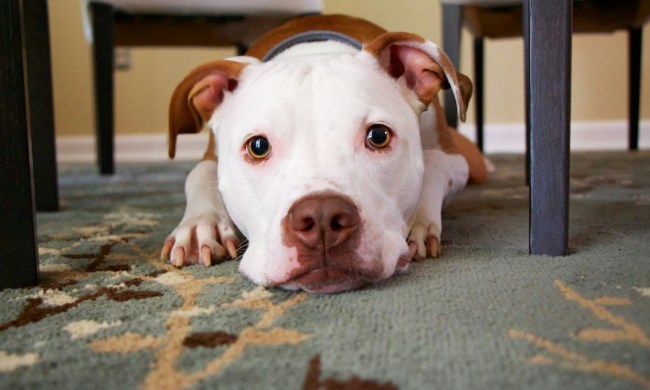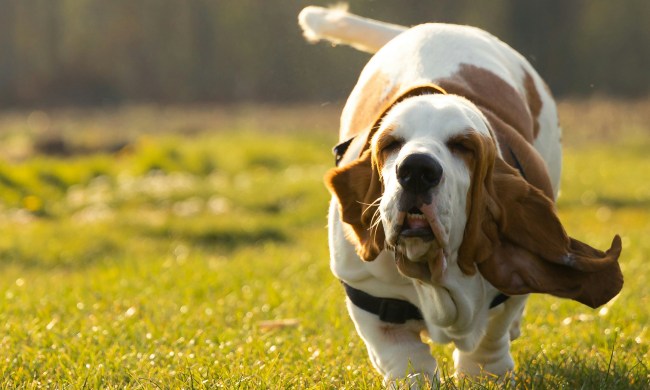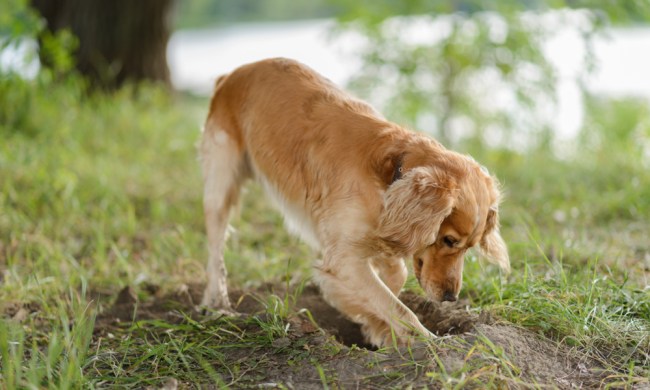So you’re wondering how to leash-train your golden retriever puppy. Congratulations on your new family member! It’s time to ensure that those walks you’ve always dreamed about become a reality with the right leash training. Or maybe your golden is an adult, but walking is becoming a nightmare. Don’t lose hope.
Training golden retrievers isn’t difficult if you know what to do. Leash training begins not with your dog but with your mindset. Goldens are intelligent, people-pleasing dogs. With the right motivation and some understanding of the golden personality, you’ll be able to train your furry friend in no time.
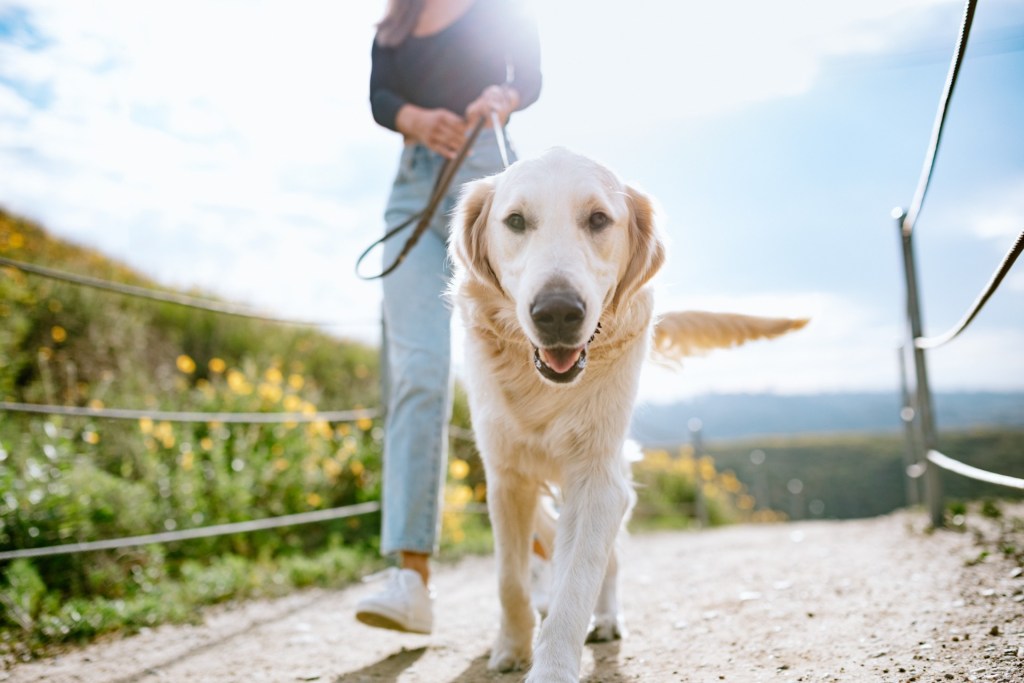
Stay calm
You love when your puppy gets all excited, but if you rile him up right before you put him on the leash, you set the tone that walks are chaos. Begin your leash training — and every walk after that — with a calm mindset, and your dog will follow.
The leader goes through the door first, so work on proper door etiquette until your puppy or dog has the right idea. This sets up your walk to succeed from the beginning.
Don't reward pulling
You don’t give treats to your dog when he pulls the leash, but you may still be rewarding the behavior. If you allow your dog to pull you over to greet the dog across the street or to sniff that really lovely tree, your dog is the winner in this tug of war.
Instead, when your dog starts pulling, stand in one spot. Beginning this training with puppies makes stopping easier, but plant your feet even with a full-grown dog. Your golden will learn that the walk only continues when you’re walking together and the leash is relaxed.
Reward walking correctly
Choose a (very small) type of treat your dog only gets on walks and use this to reinforce good behavior. Every so often as your dog walks correctly, praise your golden and dish out a treat. Eventually, wean your dog off the treats but always praise good behavior.
If you aren’t comfortable with treats, you can still dish out praise. Goldens respond really well to this type of verbal confirmation.
Walk often
Make walks a regular part of your routine. At least once a day, preferably twice, walk your dog for a period of 15 to 30 minutes.
You’ll both enjoy the health benefits, and your dog will have enough time to get used to the leash and learn what you expect. This routine is a huge part of keeping your golden leash trained for walks. Put it in your calendar or set a reminder on your phone — whatever it takes to get outside.
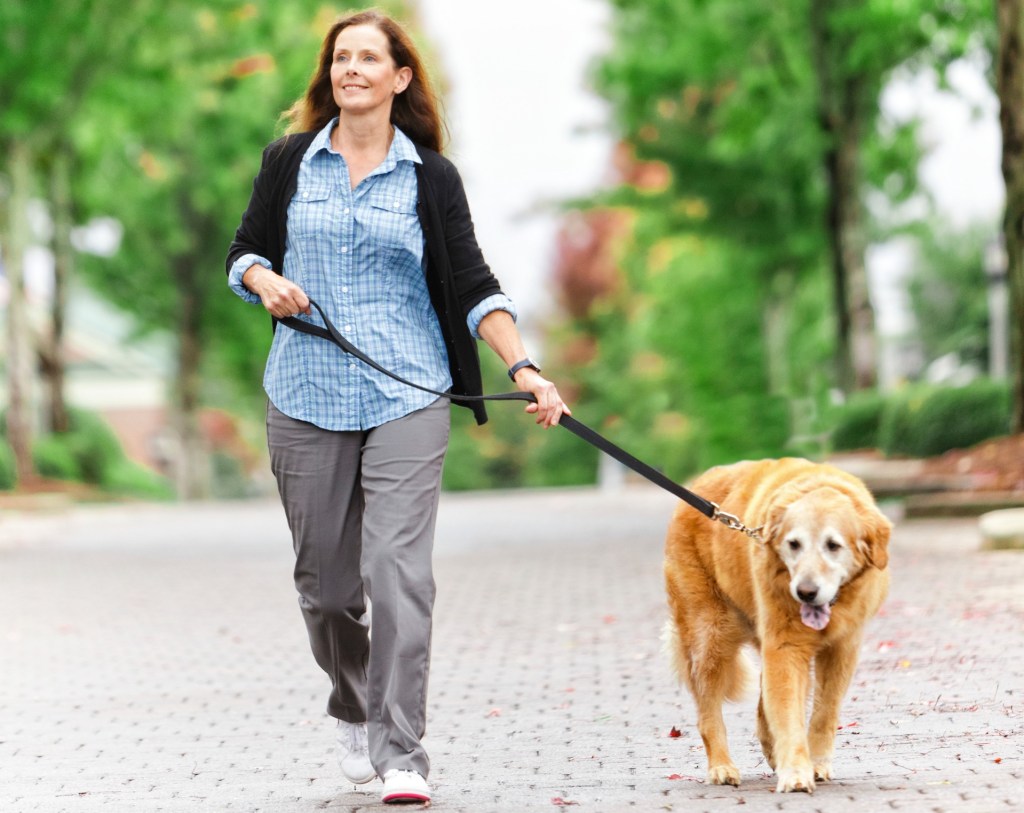
Steps to leash-training your golden retriever
Here are the basic steps for introducing your golden to the leash and getting outside. Remember to always use positive reinforcement. Yelling or other punishment types of motivation could backfire. Your golden may end up with more energy or fear of walking.
Step 1: Put the leash on your golden while in the house. If your golden is afraid of the leash, reward him with treats when he allows you to put it on him.
Step 2: While inside, walk back and forth with your dog, stopping when he pulls on the leash. This method begins to teach your golden what to expect.
Step 3: Begin teaching door etiquette. Work on getting your golden to sit while you go through the door.
Step 4: Once outside, continue stopping whenever your dog pulls on the leash. Reinforce good behavior with praise or treats, or both.
Step 5: Walk briskly for at least 15 minutes. This way, your golden doesn’t have time to pick up as many smells.
Step 6: When your dog is showing signs that he's tired and has had enough, return home and try again the next time.
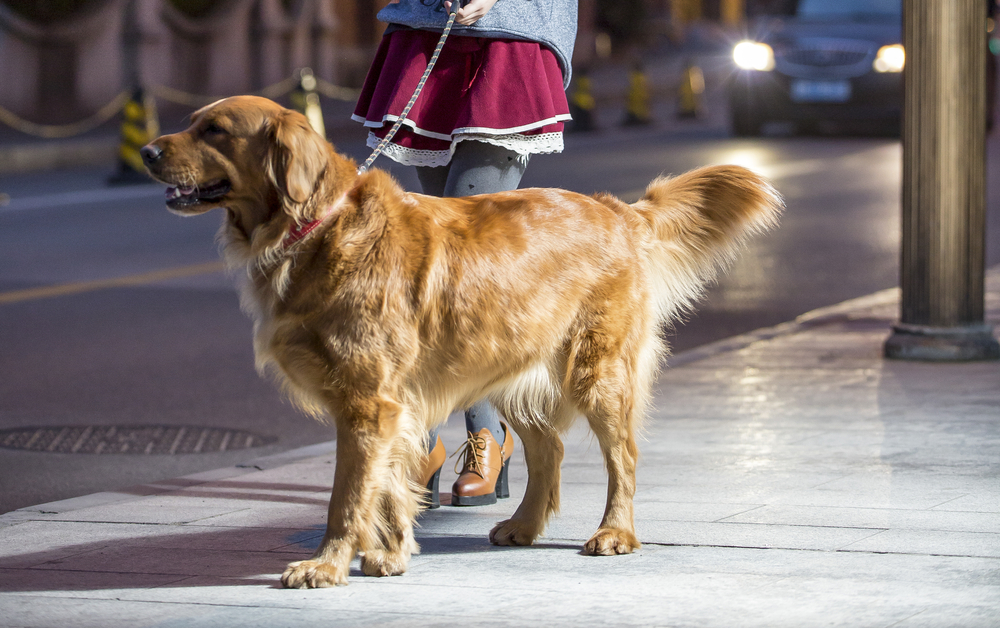
Frequently asked questions
Let’s take a look at some common questions people have about how to train a golden retriever.
When can I start leash training?
The answer here is as soon as possible. Begin working with your golden as a puppy because puppies don’t have the same pulling power as adults. However, even with adults, the sooner, the better.
Can I use a retractable leash?
Retractable leashes tend to teach bad habits because your dog learns that pulling extends the reach of the leash. A traditional one is better to establish good walking habits.
My dog has a lot of energy. How do I keep walks calm?
Golden retrievers are known for their energy and can be a lot to handle. If you have a backyard or a small space where your dog can play, having a little fun before you go on your walk can help vent some of that energy so your dog can concentrate.
Should I use a walking aid?
Some walking aids, like head halters, are a good option for wayward dogs. Never use something that can cause pain, such as choke collars that could cause injury.
Walks can be some of the best fun you’ll have with your golden. Leash training can help those walks go smoothly and safely. Proper training helps ensure that you and your golden enjoy walks each time and that the memories you make are good ones.

